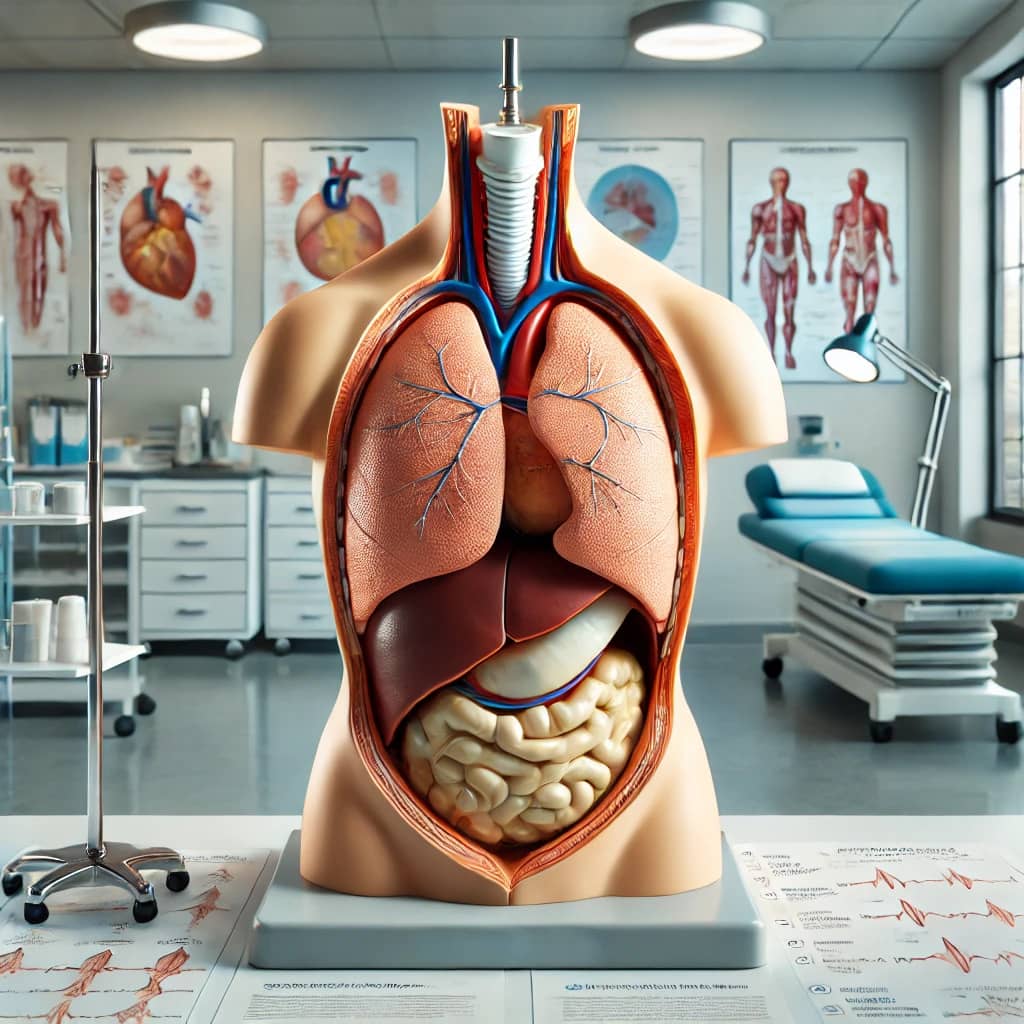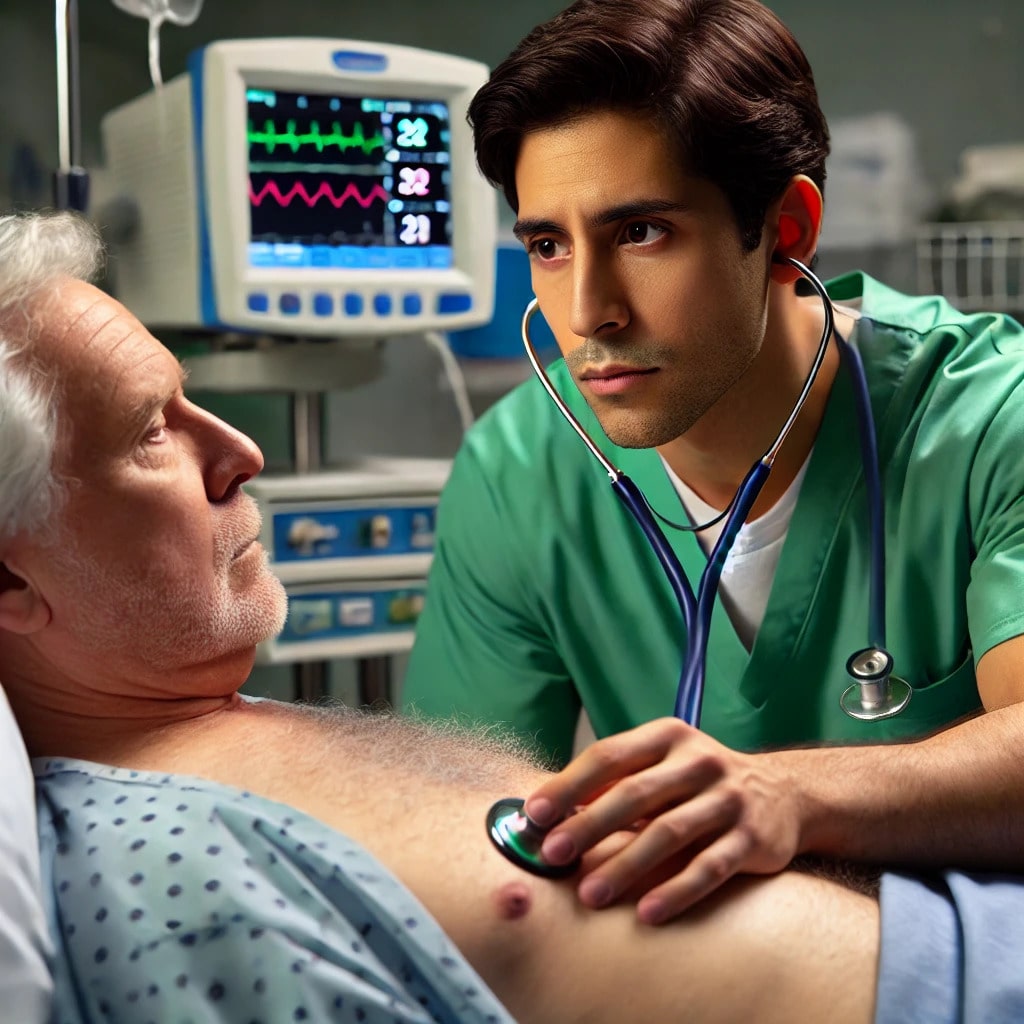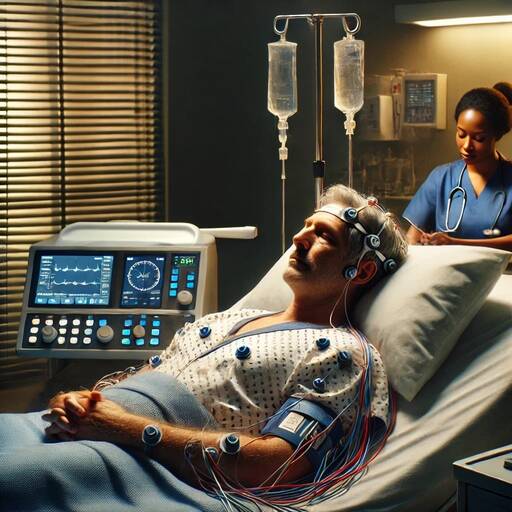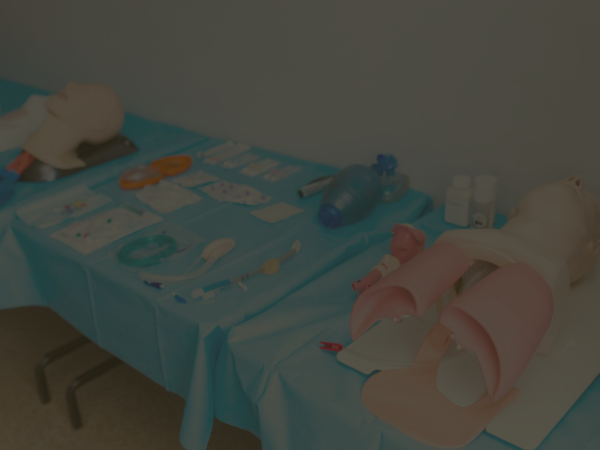Your cart is currently empty!
Breathing Backwards: Paradoxical Breathing Guide for Nurses
Most of the time, breathing is automatic. You give it little thought. But when you do, have you ever noticed your chest and abdomen contracting and expanding in the opposite way it seems they should?
This unusual breathing pattern can happen to anyone from time to time. But for some, it becomes the “automatic breathing” pattern. That can be a problem!
Paradoxical breathing can be subtle enough that some medical professionals might overlook it, especially when they’re in and out seeing many patients. But you have a keen eye and an attentive nature. You advocate for your patients’ comfort and health. You may see what others missed and need to speak up.
In this guide, we’ll explore paradoxical breathing, why it happens, when it’s dangerous, and what to do if you notice it in your patients.
What is Paradoxical Breathing?
Paradoxical breathing is a respiratory pattern in which the chest expands during inhalation while the abdomen draws inward. The opposite occurs when breathing out. Alternatively, you might see no movement in the abdomen during an inhale or exhale (nih.gov).
This type of breathing isn’t just a quirky habit. It could be a sign of an undiagnosed health issue – or a worsening medical condition.
You use three sets of muscles to breathe:
- The diaphragm (at the bottom of the ribcage)
- The intercostals (under the ribs, surrounding the lungs)
- The abdominals
Normally, your diaphragm muscle tightens and lowers when you breathe in. At the same time, the intercostals stabilize the chest, allowing the lungs to expand.
As the diaphragm lowers, it displaces abdominal organs. If someone were to look at your “belly” at this moment, they would see it expand.
When you exhale, the opposite happens. Your diaphragm rises, helping the lungs push carbon dioxide (a metabolic waste product) out of the body. Your belly returns to its normal size.
The autonomic nervous system establishes this natural rhythm and tries to maintain it throughout your life.
Paradoxical Breathing vs. Shallow Breathing
Shallow breathing is a related condition, so it’s important to make the distinction early.
First, let’s look at shallow breathing meaning. With this pattern, you take in a little air with each breath. As those shallow breaths add up, you may find that you’re not getting enough oxygen over time. Shallow breathing can lead to rapid breathing and eventually hyperventilation as the lungs try to “catch up”.
Shallow breathing can be a sign that your body’s sympathetic nervous system is activated, causing a fight-or-flight response in the body. It may be accompanied by apnea (involuntary breath holding in adults and children).
These breathing patterns may increase feelings of anxiety. Becoming aware of your breath and taking intentional, deep breaths can reduce both the feelings and the shallow breathing (nih.gov).
Rapid, shallow breathing is called “Tachypnea”. It can result from reduced lung capacity due to a blockage or chronic breathing condition. It can also be a sign of a:
- Clot
- Heart failure
- Panic attack
- Choking
When you take the BLS Certification course to earn continuing education credits, you learn what to do when you see someone experiencing Tachypnea.
Someone with shallow breathing may also begin breathing paradoxically. But this is temporary and related to a lack of breathing efficiency.
However, shallow breathing patterns can lead to muscle weakness that may cause chronic paradoxical respiratory patterns over time.
Paradoxical Respiration vs. See Saw Breathing
See-saw breathing is a type of paradoxical breathing. It’s typically a mechanical issue caused by breathing muscle fatigue. This condition results in an inefficient exchange of oxygen and carbon dioxide in the lungs. (nih.gov)
Paradoxical Inhalation vs. Stutter Breath
Stutter breath is yet another similar altered breathing pattern. Involuntary hesitations during breathing make it hard to take continuous breaths. It resembles the stutter seen in the speech disorder by that name.
What causes stutter breath? This type of breathing is believed to be caused by anxiety. But physical respiratory lung conditions can either cause or make it worse.
Symptoms of Paradoxical Breathing
Common symptoms associated with paradoxical breathing method include:
- Difficulty breathing or dyspnea
- Visible abnormal chest movements
- Potential for rapid heartbeat
- Dizziness
- Fatigue
- Additional stress on the respiratory system
Paradoxical Breathing Causes
Why does paradoxical breathing happen in patients? It’s important for doctors to explore and rule out these possible paradoxical breathing causes:
Spinal Cord Injury
Damage to the spinal cord at the C-3, C-4, and/or C-5 of the cervical spine (neck) can disrupt nerve signals. This can paralyze the intercostal muscles in the chest. Now, the diaphragm and abdominals have to do all of the work, and breathing will become abnormal. (nih.gov)
Neurological Disorders
Conditions like multiple sclerosis or Guillain-Barré syndrome affect your nerves. As these conditions progress, they could impair signaling that controls when and how the diaphragm moves. If the breathing is accompanied by the involuntary breath pauses associated with apnea, this could also suggest a neurological component.
Muscle Dysfunction
Muscles control most movement within the body. Weakened or impaired muscles may no longer support proper breathing. This might occur in diseases such as muscular dystrophy, but it could also occur when patients are recovering from a major surgery or injury that caused them to become physically inactive for a long period.
Respiratory Conditions
Obstructive sleep apnea is a common culprit. Since it interrupts the patient’s breathing at night, the diaphragm may become weak. Over time, this changes how the patient breathes. Patients with asthma or Chronic Obstructive Pulmonary Disease (COPD) may also develop a paradoxical breathing pattern.
Electrolyte Imbalances
A patient with hypokalemia (low blood potassium) or hypocalcemia (low calcium) may lose the ability to control their muscles. We often think of calcium as important for the bones, but calcium also causes muscles to contract. If blood calcium levels get dangerously low, the body may no longer have enough to efficiently manage even the most vital muscle movements.
Similarly, the muscles need potassium to initiate contractions and remove metabolic waste from the cells.
The human body is amazing at redistributing minerals to vital organs when supplies are low. So, if the body has reached the point where it can’t prioritize enough calcium and potassium for the most critical body functions, those electrolytes may be dangerously low.
Diagnosis of Paradoxical Inhalation
When your patients show signs of paradoxical inhalation, they need a thorough examination by a diagnosing provider, such as a doctor or nurse practitioner, to determine the reason for this breathing pattern. The diagnosing process might include:
Observation
Diagnosis starts with first spotting abnormal breathing and choosing to take a closer look. You’ll see the chest contracting when the patient inhales and expanding when they exhale—the opposite of normal breathing. If, at this stage, the patient appears distressed, it’s vital to begin emergency protocols following your ACLS algorithms.
Medical History
It’s important to ask patients about any recent accidents, breathing problems, or neurological symptoms in addition to collecting the usual medical history. This is somewhere a less experienced medical professional might stick with the script and fail to ask the right questions.
Physical Examination
A comprehensive physical exam can verify whether the patient is experiencing chronic or acute paradoxical breathing. The appropriate medical professionals will look for signs of trauma, respiratory issues, or neurological problems.
Pulmonary Function Test
The doctor may order a pulmonary function test, which measures the volume of air moving in and out of the lungs. The breathing efficiency test can narrow down the possible paradoxical breathing causes.
Imaging Tests
Depending on the findings of the pulmonary function test and physical exam, a doctor will determine which imaging test to order. These might include MRI, CT, or X-rays to visualize the chest and diaphragm. The practitioner looks for physical abnormalities or injuries.
Sniff Test (Chest Fluoroscopy)
This exam uses a fluoroscope and screen to watch the movement of the diaphragm.
Blood Tests
If other signs of electrolyte imbalance or metabolic issues exist, the doctor may order blood tests to verify levels.
Remember, timely and accurate diagnosis can significantly improve the management of this condition, enhance overall respiratory health, and impact recovery. If you are not a diagnosing provider and see signs of paradoxical breathing, it’s critical to alert the attending doctor.
You can learn more about these other symptoms to watch out for when you start our free BLS course.
Paradoxical Breath Treatment Strategies
Treatment involves identifying and addressing the underlying condition. Depending on the cause, a person may need the following:
- Respiratory therapy
- Physical therapy
- Surgery
- Medication
- Electrolyte infusion
- Behavioral health and anxiety treatment
- Lifestyle adjustments and coaching for smoking cessation, nutritional support, and exercise
- Oxygen therapy
- Mechanical ventilation
Paradoxical Inhalation in Special Populations
Children
It’s common for children, especially infants, to breathe paradoxically. This occurs because the rib cage is softer and more flexible than that of adults. But if it happens along with certain signs and symptoms, this child may need a medical evaluation. These include:
- Respiratory distress, such as grunting
- Flaring nostrils
- Bluish tint to the skin
To learn more, take a free PALS training course.
Older Individuals
In the elderly, this breathing pattern can signal weakening respiratory muscles or an undiagnosed lung/nerve disease. Because older people have less oxygen reserve, medical professionals, staff, and family should take these signs very seriously and request an immediate medical evaluation.
Those with Chronic Illnesses
Patients who have long-term medical conditions, especially those we’ve discussed, are at higher risk of developing this breathing disorder. Those caring for them should stay vigilant for signs of distress.
Interesting Studies on this Phenomenon
A study published in the European Respiratory Journal explored this phenomenon while exercising in 20 COPD patients plus 10 controls. They used an optoelectronic plethysmography to measure rib cage volume during exertion and at rest.
This study found eight of the 20 COPD patients experienced paradoxical movements. They also found no connection between the breathing style and exercise tolerance or resting function. Those with the condition appeared to compensate for the altered breathing pattern.
A case study published in the Journal of Sleep Medicine presented a 59-year-old woman experiencing excessive daytime tiredness. She had known cerebellar-type multiple system atrophy, a neurodegenerative disorder that impacts motor functions. However her respiratory system did not appear affected.
A sleep test revealed that during REM sleep, she would begin breathing paradoxically.
The breathing pattern was found to be unrelated to airway obstruction. Researchers instead hypothesized that her condition disrupted the body’s ability to regulate diaphragm function only during sleep for an unknown reason. In her case, CPAP at low pressure (5 cm H2O) was enough to help her body regulate the diaphragm.
Paradoxical Chest Movement: Know When It Matters
Breathing paradoxically is not dangerous. But it could be a sign of a serious underlying condition. Nurses should stay vigilant. If you notice a patient experiencing paradoxical chest movements, bring it to the attention of the attending doctor if it’s not already noted in the chart.
As a nurse, you play a vital role in the health care system. Your keen eye for things that don’t look right can lead to early detection of symptoms that often pass under the radar.
Keep advocating for patients and expanding your clinical knowledge through ongoing reading (like this article) and formal training. Wondering where to get started? Take our ANCC-Accredited ACLS Certification course online and earn up to 8 CME credits.
Frequently Asked Questions
Is Paradoxical Breathing Dangerous?
It’s a symptom and not a diagnosis. As such, it is dangerous because it may be a sign of a serious underlying condition. The breathing itself is inefficient but not inherently dangerous.
What Does Paradoxical Breathing Indicate?
It may indicate a problem with breathing muscles, nervous system, electrolytes, or chest mechanics.
Why Do I Gasp for Air Like a Hiccup?
Gasping for air like a hiccup can occur after a moment of apnea (stopped breathing) as you draw in air quickly. You may also experience a hiccuping breath during a hypnic jerk. Those are the sudden convulsions you might experience when trying to fall asleep.
What Is Double Breathing?
Double breathing involves trying to take a second breath involuntarily while you’re exhaling. Causes can include anxiety, stress, asthma, a heart condition, or visiting a high altitude to which your body is not acclimated. While counterproductive, it’s a reflexive response when your brain perceives that you’re not getting enough oxygen.
How Does Paradoxical Breathing Relate to Flail Chest?
Flail chest is a chest trauma condition in which a person has multiple rib fractures and rib detachment. This causes destabilization of the chest muscles and abnormal breathing, which could include breathing paradoxically.










Leave a Reply